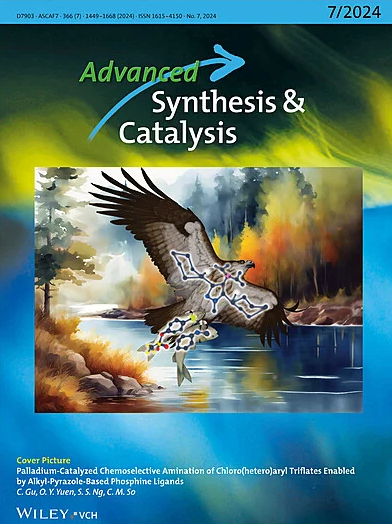现代还原化学中的二硼试剂:各种官能团还原的通用工具
IF 4
2区 化学
Q2 CHEMISTRY, APPLIED
引用次数: 0
摘要
醛、酮、硝基、亚胺、炔等多种有机官能团的还原由于其产物在有机转化反应中的广泛应用而引起了人们的广泛关注。为了尝试氢化,已经报道了几种使用氢分子作为还原源的方法。此外,这种二硼(四羟基二硼、双糖可乐二硼、新糖可乐二硼)在不使用任何氢分子的情况下还原可还原官能团是一种很有前途的替代方法。市售二硼的无配体还原方法通过水或有机溶剂和金属盐还原有机化合物,使其成为最近还原和氢化时代的一个有吸引力的方案。在这里,我们提供了广泛的和集体的概述二硼介导的各种有机化合物的还原方法。本文章由计算机程序翻译,如有差异,请以英文原文为准。
Diboron Reagents in Modern Reduction Chemistry: A Versatile Tool for Reduction of Various Functional Groups
Reduction of various organic functionality including aldehyde, ketone, nitro, imine, and alkyne has gained noteworthy attention due to its vast application of products in organic transformation reactions. To attempt hydrogenation several approaches have been reported by using molecular hydrogen as a reducing source. Besides, this diboron (tetrahydroxy diboron, bispinacolato diboron, neoglycolato diboron) has shown a promising and alternative approach for the reduction of the reducible functional group without using any molecular hydrogen. The ligand‐free reduction approach of commercially available diboron reduces the organic compound by using water or organic solvent and metal salt making it an attractive protocol in the recent era of reduction as well as hydrogenation. Herein, we provide an extensive and collective overview of the diboron‐mediated reduction approach of various organic compounds.
求助全文
通过发布文献求助,成功后即可免费获取论文全文。
去求助
来源期刊

Advanced Synthesis & Catalysis
化学-应用化学
CiteScore
9.40
自引率
7.40%
发文量
447
审稿时长
1.8 months
期刊介绍:
Advanced Synthesis & Catalysis (ASC) is the leading primary journal in organic, organometallic, and applied chemistry.
The high impact of ASC can be attributed to the unique focus of the journal, which publishes exciting new results from academic and industrial labs on efficient, practical, and environmentally friendly organic synthesis. While homogeneous, heterogeneous, organic, and enzyme catalysis are key technologies to achieve green synthesis, significant contributions to the same goal by synthesis design, reaction techniques, flow chemistry, and continuous processing, multiphase catalysis, green solvents, catalyst immobilization, and recycling, separation science, and process development are also featured in ASC. The Aims and Scope can be found in the Notice to Authors or on the first page of the table of contents in every issue.
 求助内容:
求助内容: 应助结果提醒方式:
应助结果提醒方式:


